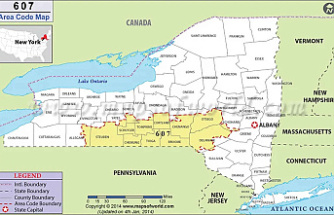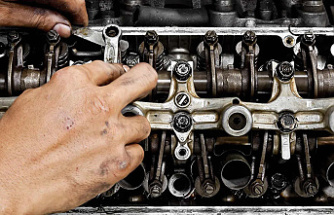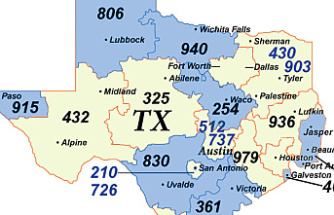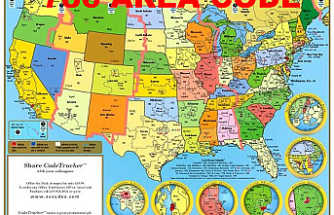CLEVELAND, Ohio -- Nearly a third of the major characters in the top 100 grossing movies in 2016 were female. And while that figure might seem low considering women make up half the world's population, it represents a historic high, according to a recent study.
A survey from Center for the Study of Women in Television and Film found that women made up 29 percent of main characters in 2016's top 100 movies, a 7 percent increase over 2015.
But Hollywood, film experts say, still has a long way to go.
While movies like "Star Wars: The Force Awakens" -- which centers around a strong female hero who doesn't need rescuing -- are increasingly common, films like "Deadpool" -- which stars a male action hero who embarks on a mission to save his girlfriend -- are still the norm.
To some it's a baffling notion that women can make up half the world but less than a third of movie protagonists. But more baffling still is that, even as women gain in other areas, the number of speaking lines for women has remained frustratingly low.
So while women are more likely to play prominent roles, they are just as likely to stay silent.
"When you depict life, you want to depict it in ways that capture what is happening in the real world," said Cynthia Baron, a professor in Bowling Green State University's department of theater and film.
Movies and television, she said, "represent the richness of the world. There needs to be a closer correspondence between characters and life."
The numbers
While women made up just under 30 percent of leading roles in 2016, less than 20 percent of television shows in the 2015-2016 season were more female than male.
And when you look behind the camera, the numbers are even lower.
Women hold around 17 percent of the jobs behind the camera, which includes powerful positions like screenwriter, director and executive producer, all of whom have the power to shape a film's story and character arcs.
That figure represents a 2 percent decrease from 2015, the center's study found.
The people with the pens tend to tell the stories that most resemble their own, Baron said.
Top critics, who serve as gatekeepers of sorts for the film industry, are still overwhelmingly men, the study said.
Around 27 percent of critics were women in 2016. While the ratings these critics doled out didn't seem to change based on the gender of a film's protagonist, the study said, critics were more likely to review movies starring characters of their own gender, granting far greater exposure to movies with male leads.
Why diversity important
The effects of entertainment on behavior is still not entirely understood, and different researchers have come to differing conclusions. Studies have largely found, for example, that violence in movies and television has no correlation with violence in the real world.
Yet there is a widely held belief that entertainment can affect how young people are socialized. Stanford Psychologist Albert Bandura famously found in the 1970s that viewers can learn behaviors by observing fictional characters.
Experts interviewed for this article agreed that viewers can develop their perspectives on gender relations based on what they see on screen.
"In some ways, film is viewed by a lot of people as portraying reality, or in a way, creating reality or our understanding of it," said Jeanne Kusina, a University of Toledo women and gender studies professor.
Two-dimensional female characters in movies and television help create myths about the roles of women in society, she said.
"So many people go to the movies, they're really sending important cultural messages," she said.
Parts for women in the past
Women like Katherine Hepburn routinely played strong, independent female characters in the early part of the 20th Century.
But as the years wore on, women became more likely to play girlfriends, wives, mothers and temptresses in big-budget blockbusters. Even capable female characters, like the Black Widow in Marvel's "Avengers" movies, are more likely than their male counterparts to need rescuing in modern cinema.
What changed?
Film experts and historians offer a variety of reasons for the shift.
Censorship in the first half of the 1900s meant women could rarely express their sexuality on screen, Ohio University film professor Natasha Maidoff said.
"A lot of people complain that roles for women (in that era) were more respectful," she said, adding "women were not allowed to be sexualized in the same way" they are today.
Then came the sexual revolution in the 1960s and the social mores that prevented filmmakers from depicting sexuality on screen vanished. Male directors were suddenly able to portray women as sex objects without fallout from the movie industry, Maidoff said. And the tendency to portray women as sexual trophies for men, or simply as eye candy, persists to this day.
But Kusina said the shift may have started earlier than that when the movie industry systematically phased out the women working behind the camera.
After the silent film era, writers, camera operators, and others who worked behind the scenes organized, forming unions that typically excluded women, Kusina said.
"A huge part of it was the professionalization of the industry," she said. The unions "made life affordable for people in the industry, but they kept women out."
With more and more men making movies, Hollywood began to single out young men as their target audience.
Common narratives in television and movies geared toward men gradually conditioned women to take on the male point of view, said Molly Swiger, chair of the communication arts and sciences department at Baldwin Wallace University.
"They were more apt to be okay with watching a movie about men," she said.
The struggles
Maidoff -- who has also written and directed short films -- wrote a screenplay about Cassie L. Chadwick, a famous con woman who defrauded banks by convincing them she was Andrew Carnegie's illegitimate daughter.
But she struggles to find a director or producer willing to take on the project, because the people behind the camera are still overwhelmingly men, and gravitate toward stories that appeal to other men.
"You can't get a strong female lead without a hard-hitting male director," Maidoff said.
Very few women are in positions to greenlight movies and television shows, Baron said, and male producers "are often going to greenlight projects that speak to them."
And even when women are cast in important roles, Baron added, they rarely play characters with in-depth backstories.
"As someone who has been watching movies for my entire life, I do find myself actually surprised when I see a female character who has a character arc," Baron said. "Someone who meets goals, has obstacles, changes and grows."
When women play major roles, they are overwhelmingly the love interest, or they play a character who advances the goals of a male character, she said.
Common are characters like Harley Quinn in 2016's "Suicide Squad," who dresses in a provocative manner and has few important speaking lines. Or Lois Lane from recent Superman movies, who serves as a love interest.
"It's not their story," Baron said of these female characters. "You don't really see female characters as subjects or as complex human beings."
The problem is likely to persist.
University of Toledo film professor Tammy Kinsey said her classes continue to be dominated by male students.
"They want to talk about 'The Godfather,' 'Star Wars' and the latest 'Mad Max' movie," she said. "That's not to say there aren't men who appreciate the finer points of cinema, but there's a great interest in things that explode."
The sense that the male action hero is comfortable to viewers persists in the film industry, she said.
Television saw a streak of female protagonists in the '90s, but even when women were allowed to play the lead character in a movie or television series, they were still overtly sexualized, Swiger said.
"Xena Warrior Princess," a tremendously popular television series that premiered in 1995, starred Lucy Lawless as a fierce warrior. But while Xena's male counterparts wore heavy suits of armor, she sported a skirt and a leather tank top, which -- as fan boys gleefully observed -- couldn't have provided her with much protection in combat, but exposed plenty of skin.
Of course, a portion of the fault lies with consumers.
Action movies and superhero movies -- which are largely written by and star men -- tend to dominate the box office in the modern cinematic era.
The most attended movies of 2015 and 2016, for example, include "Doctor Strange," "Suicide Squad," "Furious 7," "Batman V Superman," "Captain America: Civil War," "Deadpool," and "Avengers: Age of Ultron." Each features a largely male cast.
"Those are the stories that men generally write over women," Maidoff said.
Minorities
Opportunities for black, Hispanic and Asian actors are little better, but have also shown improvement in recent years.
"The 2017 Hollywood Diversity Report" from Ralph J. Bunche Center for African American Studies at UCLA, looked at 1,200 TV shows and 168 movies in theaters in 2015 and the 2014-15 television season.
Minorities had 11.4 percent of leading roles, a 3 percent jump over 2015.
The number of shows starring primarily minority actors jumped from nearly 9 percent from just over 3 percent
Television has progressed faster than film thanks to a dearth of options, Bunche Center director Darnell Hunt told the Los Angeles Times.
Hundreds of channels already vie for viewers' attention, and streaming services like Hulu and Netflix have thrown their own shows into the mix, creating a plethora of options.
That variety creates more opportunities for minorities and women in television, Hunt told the Times.
"It used to be the big four networks, then you got the smaller networks, then the 60-plus cable networks, now there are all the digital networks" he said.
Reality shows take up a significant chunk of airtime, Hunt told the Times, but hundreds of scripted shows still populate the airwaves.
"And on some level, the industry still has to populate that space, so they can't go back to the same 15 white guys," he said.
Incremental Progress
Even as fewer women take positions behind the camera in Hollywood, the number of women in front of it in leading roles is at an all-time high -- even if that figure still seems embarrassingly low.
And women played some of the most successful movie roles in the past two years.
The highest grossing movies released in 2015 and 2016 both star women in the central role. They are 2015's "Star Wars: The Force Awakens" starring Daisy Ridley, and 2016's "Rogue One: A Star Wars Story," starring Felicity Jones.
"The Force Awakens" eclipsed $2 billion at the box office and "Rogue One" made a still-impressive $1.05 billion.
Neither Felicity Jones' Jyn Erso in "Rogue One" nor Daisy Ridley's Rey in "The Force Awakens" wear skimpy clothes or are overtly sexualized. Both work hard to overcome obstacles, and their characters grow and change through the course of the story.
But such visibility for women at an elite level is no guarantee of change.
Katherine Bigelow, for example, directed "The Hurt Locker," an acclaimed 2008 Iraq war drama that earned her an Academy Award for Best Director. And her spy drama "Zero Dark Thirty" earned a Best Picture nomination at the 2013 Oscars and made $132 million at the box office.
But Bigelow's success has apparently not translated into more opportunities for female directors, as the number of women taking the director's chair has remained largely stagnant.
Even so, Maidoff said she remains optimistic.
"It's been slow going," Maidoff said. "Hopefully it's going to continue to change and move (in a more diverse) direction."
Our editors found this article on this site using Google and regenerated it for our readers.












